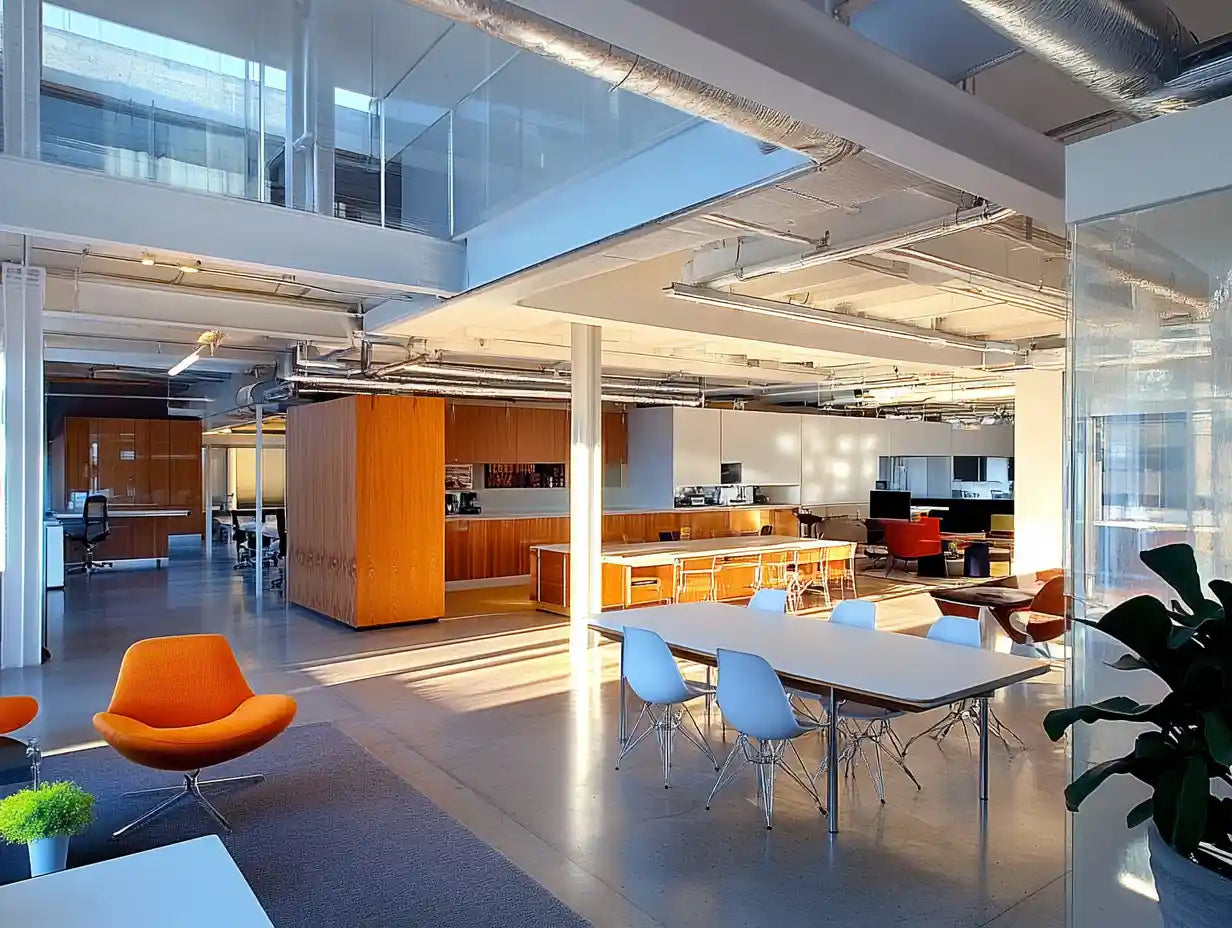
Landing an internship as an architecture student can feel like a daunting task, but it’s one of the most important steps in shaping our future careers. Internships give us hands-on experience, a chance to apply what we've learned, and an opportunity to build connections that can open doors in the industry. The key is knowing how to stand out in a competitive field.
We all know the architecture world thrives on creativity, precision, and strong communication skills. But how do we showcase these qualities to potential employers? From crafting a compelling portfolio to nailing interviews, there are proven strategies that can help us secure the right opportunity. Let’s explore how to navigate this journey with confidence and set ourselves up for success.
Importance Of Internships For Architecture Students
Internships enable architecture students to bridge the gap between academic learning and professional practice. They provide exposure to real-world applications of architectural concepts, preparing students for the challenges of the industry.
Practical experience enhances understanding of construction techniques, design processes, and project management. For example, students might participate in drafting plans, site visits, or client presentations, gaining hands-on knowledge that supplements theoretical studies.
Networking opportunities arise during internships, allowing students to connect with experienced professionals and potential mentors. These relationships often lead to future job offers or valuable industry recommendations.
Skill development becomes more focused in internships as students refine abilities like CAD proficiency, 3D modeling, and technical drawing. These skills increase employability and align with market demands.
Portfolio-building benefits are significant, as internships give students access to real projects. Work samples from internships demonstrate initiative and capability, strengthening their portfolios for future applications.
Understanding workplace dynamics, such as collaboration, time management, and client interaction, helps students adapt to professional environments faster. They learn to work within teams, meet deadlines, and address client feedback effectively.

Preparing For Your Internship Hunt
A strategic approach can make your internship hunt more effective. Focus on showcasing your skills, experiences, and technical expertise to create a lasting impression.
Building A Strong Portfolio
A portfolio is a key tool to demonstrate your design abilities. Highlight diverse projects, including academic work and personal initiatives, to showcase versatility. Incorporate only well-documented and high-quality visuals like CAD drawings, 3D renderings, and sketches. Use clear descriptions to contextualize your projects, explaining design intent, challenges, and solutions. For digital portfolios, ensure the layout is user-friendly, with a logical sequence and optimized file size. Update your portfolio regularly to reflect your latest work.
Perfecting Your Resume And Cover Letter
Tailoring your resume and cover letter for architecture roles increases their impact. List relevant experiences such as design competitions, part-time roles, and academic achievements. Mention technical proficiencies like AutoCAD, SketchUp, or Adobe Suite, along with soft skills like teamwork and problem-solving. Align the cover letter with each firm's values and ongoing projects based on research. Use concise language to explain how your skills can contribute to their objectives. Proofread both documents to eliminate errors and maintain professionalism.
Enhancing Your Technical Skills
Refining technical competencies broadens your appeal to employers. Proficiency in architectural software like Rhino, Revit, or Lumion is essential. Explore online courses or workshops to learn advanced techniques. Strengthen hand-drafting and physical model-making skills for firms that value traditional methods. Staying updated on industry trends, including parametric design and sustainable practices, demonstrates adaptability. Apply these skills in small projects or collaborations to establish practical application evidence.

Finding The Right Internship Opportunities
Identifying suitable internship opportunities is essential for architecture students to gain valuable experience and build their professional network. Strategic approaches can simplify the process and enhance the likelihood of securing a position.
Networking With Industry Professionals
Building connections with architects and industry professionals helps uncover hidden opportunities. Attending events like architecture expos, seminars, and workshops facilitates meaningful interactions. Joining local chapters of organizations such as the American Institute of Architects (AIA) further expands networking possibilities. A direct, personalized approach—emailing professionals or engaging through LinkedIn—often leads to informational interviews or recommendations.
Utilizing Online Platforms
Online platforms streamline the search for architecture internships. Websites like Archinect, LinkedIn, and Glassdoor regularly update postings from leading firms. Customizing profiles, showcasing portfolios, and using targeted searches increase visibility to recruiters. Engaging in professional forums or architecture-focused groups enhances our understanding of current trends and available opportunities.
Researching Firms And Their Work
Exploring firms' portfolios, design philosophies, and project scopes ensures alignment with our interests and capabilities. Checking company websites helps identify internship programs or career pages. Smaller practices, often overlooked, provide hands-on experience and direct mentorship—ensuring a personalized learning curve. Thorough research before applying demonstrates genuine interest and knowledge about the organization.

Nailing The Application Process
Securing an internship begins with showcasing a personalized, focused approach in your application. A well-crafted application demonstrates genuine interest, research, and alignment with the firm's values and work.
Tailoring Your Application To Specific Firms
Customizing each application improves your chances of getting noticed. We recommend researching the firm's project portfolio, design philosophy, and active initiatives before applying. Highlight your skills and experiences that match their recent or ongoing projects. For example, if a firm specializes in sustainable architecture, emphasize your experience with green design or relevant coursework.
Adapt your portfolio and resume to reflect the firm's aesthetics and focus areas. Include projects with similar design elements or technical challenges. When writing your cover letter, address the firm's unique values and explain how your contribution fits their objectives, referencing specific projects from their portfolio.
Following Up Effectively
Polite, timely follow-ups demonstrate professionalism and commitment. After sending an application, wait 7-10 business days if no response is received. Reach out via a concise email, reiterating your interest in the role while thanking them for considering your application. Address the email to the appropriate contact, such as the HR manager or the firm principal.
After interviews, send a follow-up thank-you email within 24-48 hours. Mention specific details discussed during the interview to leave a lasting impression. If offered feedback, ensure you incorporate it into future applications to show growth and adaptability.

Acing The Interview
Excelling in interviews is key to securing architecture internships. Demonstrating professionalism, confidence, and a deep understanding of the field can leave a lasting impression on potential employers.
Common Interview Questions And Answers
Interviewers often gauge candidates' technical skills, creativity, and adaptability. Being well-prepared for commonly asked questions boosts confidence and professionalism.
- "Why did you choose architecture as a career?" Show passion for architecture, referencing specific inspirations or experiences that influenced your choice. Highlight unique motivations and career goals.
- "Tell us about a challenging project you worked on." Describe a project where you overcame obstacles, focusing on problem-solving, teamwork, or innovative thinking.
- "What design software are you proficient in?" Mention specific tools like AutoCAD, SketchUp, Revit, or Rhino, and share examples of how you've used them in academic or personal projects.
- "How do you manage deadlines in design work?" Discuss methods for staying organized, such as breaking tasks into manageable steps or utilizing time management tools.
- "What do you hope to gain from this internship?" Align your answer with the firm's objectives, emphasizing skill-building, collaboration, and learning from their expertise.
Presenting Your Portfolio With Confidence
A strong portfolio presentation significantly impacts interview success. Effective communication and polished visuals showcase your abilities effectively.
- Organizing Your Work: Arrange projects to reflect your growth and versatility, beginning with your strongest piece. Include academic designs, personal projects, and conceptual explorations.
- Explaining Design Intent: Clearly articulate each project's purpose, challenges, and outcomes. Use concise language to connect technical details to artistic vision.
- Engaging The Interviewers: Maintain eye contact while discussing your work. Encourage questions, demonstrating your enthusiasm and readiness to engage in a design dialogue.
- Using High-Quality Visuals: Ensure illustrations, diagrams, and models are clear and professional. Use tools like InDesign to achieve polished layouts.
- Customizing Content: Tailor the portfolio to reflect the firm's style or specialize in areas they're known for, whether urban planning, sustainability, or minimalism.

Making The Most Of Your Internship
An internship is more than just gaining experience; it's an opportunity to expand our skills and create a strong professional foundation. To maximize this experience, we must focus on meaningful interactions and continuous improvement.
Establishing Strong Relationships
Building rapport with colleagues and mentors opens doors to future opportunities. Actively participating in team discussions, offering constructive input, and showing readiness to learn can leave a positive impression. For example, if we're working on collaborative projects like drafting designs or preparing client presentations, maintaining clear communication ensures efficiency and builds trust.
Networking within the company and beyond strengthens our industry connections. We should engage with professionals by attending firm-hosted events, asking thoughtful questions, and following up after meaningful interactions. This approach demonstrates our interest in the field while fostering long-term professional relationships.
Learning And Growing Through Feedback
Seeking feedback on tasks helps us identify areas for improvement and refine our skills. Whether it’s a design draft, technical drawing, or client pitch draft, we should approach feedback sessions with an open mind and implement suggestions promptly. This adaptability showcases our commitment to growth and professionalism.
Using mentors as resources accelerates learning. Inquiring about their experiences with design processes, project management, and industry best practices not only enhances our knowledge but also establishes us as proactive learners. For example, asking a mentor about innovative design solutions they've executed provides insights into practical applications we can emulate.

Conclusion
Securing an internship as an architecture student requires a strategic and focused approach. By building a strong portfolio, enhancing technical skills, and tailoring applications to specific firms, we can effectively showcase our abilities and align with industry expectations. Networking through events, organizations, and online platforms broadens our horizons and uncovers valuable opportunities.
Excelling in interviews through preparation, customized portfolios, and clear communication strengthens our candidacy. Once we secure an internship, actively learning through collaboration, seeking feedback, and leveraging mentorship helps us maximize the experience and establish a solid foundation for our architectural careers.


Comments (0)
Back to Architecture and Design Blog